Ever dreamed of strolling through a Bavarian village or sipping wine in the Danish countryside? Your next European escape might be closer than you think. Hidden across America are towns that capture the essence of Europe so convincingly, you’ll forget which continent you’re on.
These aren’t theme parks or tourist traps. They’re authentic communities where immigrants built new lives while keeping their old-world traditions alive. From cobblestone streets to centuries-old windmills, these places offer something surprisingly rare in modern travel: genuine cultural experiences that don’t require a passport.
Ready to discover America’s best-kept European secrets?
Solvang, California: Denmark Without the Jet Lag
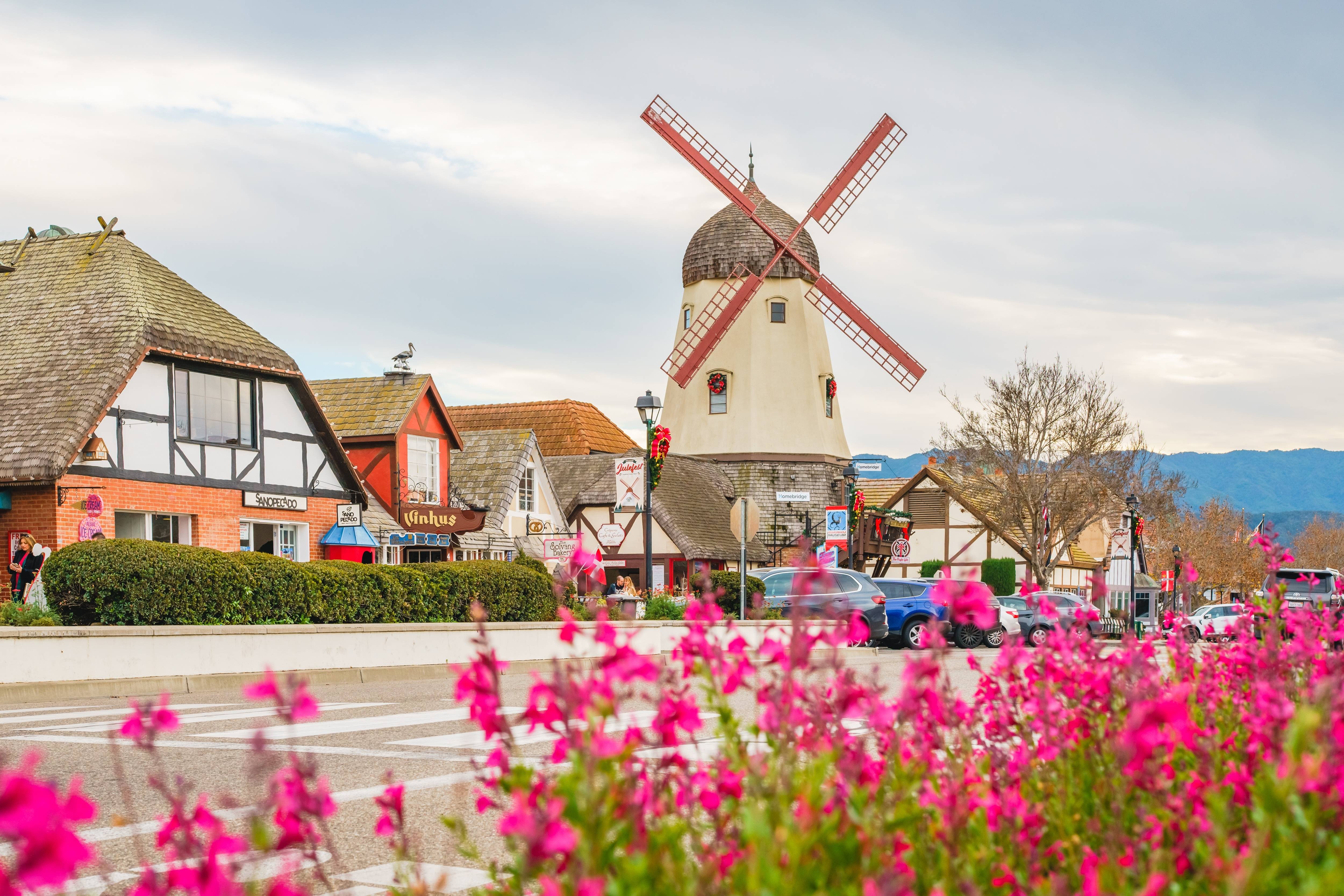
Picture windmills spinning lazily in California sunshine, half-timbered buildings lining flower-filled streets, and the scent of fresh aebleskiver wafting from every corner. Solvang is one of the top European-style cities in America, and the minute you step foot into town, you’ll feel like you’ve been transported to Denmark. This Santa Ynez Valley gem delivers Danish charm with a side of California wine country.
Solvang’s connection to Denmark dates back to 1911, when Danish-American immigrants founded the town. Over the years, Solvang has leaned into its Danish roots, with bakeries selling Danish pastries, shops featuring Scandinavian goods, and replicas of famous Danish landmarks like Copenhagen’s Rundetarn (Round Tower) and the Little Mermaid statue.
The transformation wasn’t accidental. The town’s transformation into a Danish-inspired village began in the mid-20th century. After a 1947 article sparked interest in the town’s Danish heritage, local leaders decided to refurbish existing structures and ensure that all new buildings followed traditional Danish architectural styles.
This little town is famous for its breweries, Danish-inspired architecture, Danish pastries, and Ebelskivers (which are Danish pancakes that pair well with lingonberry jam!). There are a number of Danish bakeries around, so take your pick from the lot! You can’t go wrong with Olsen’s Danish Village Bakery or Mortensen’s Bakery.
Leavenworth, Washington: Bavarian Alps in the Cascades

Tucked into Washington’s Cascade Mountains, Leavenworth pulls off one of America’s most convincing European transformations. This tiny mountain town is all Bavarian everything – timber-frame buildings, bratwurst, beer gardens, and flower boxes overflowing with color. Nestled in the Cascade Mountains, Leavenworth reinvented itself in the 1960s to boost tourism, and it worked.
Washington’s signature Bavarian village doesn’t actually boast any traditional connection to Germany, per se. The township was initially founded in 1906 as a logging town, then grew in importance as a hub on the Great Northern Railway. However, when the stop was rerouted to nearby Wenatchee, Leavenworth’s experienced a dramatic fall in fortunes, which led locals to brainstorm a backup plan. Inspired by a Danish-themed town in central California, the board approved plans to shift Leavenworth’s economy from railway to tourism, which inspired the village’s first Bavarian-themed hotel, The Edelweiss Hotel, and countless Germanic architecture structures to follow.
The town doesn’t just look German. Today, it’s known for its year-round festivities: Oktoberfest, complete with lederhosen and oompah bands · Christmas Lighting Festival, where the whole village sparkles · Traditional German bakeries and steins of dark lager · Why it feels European: It doesn’t just look the part – it lives it. From architecture to food to music, the Bavarian vibes are strong.
St. Augustine, Florida: Spain’s Forgotten Colony
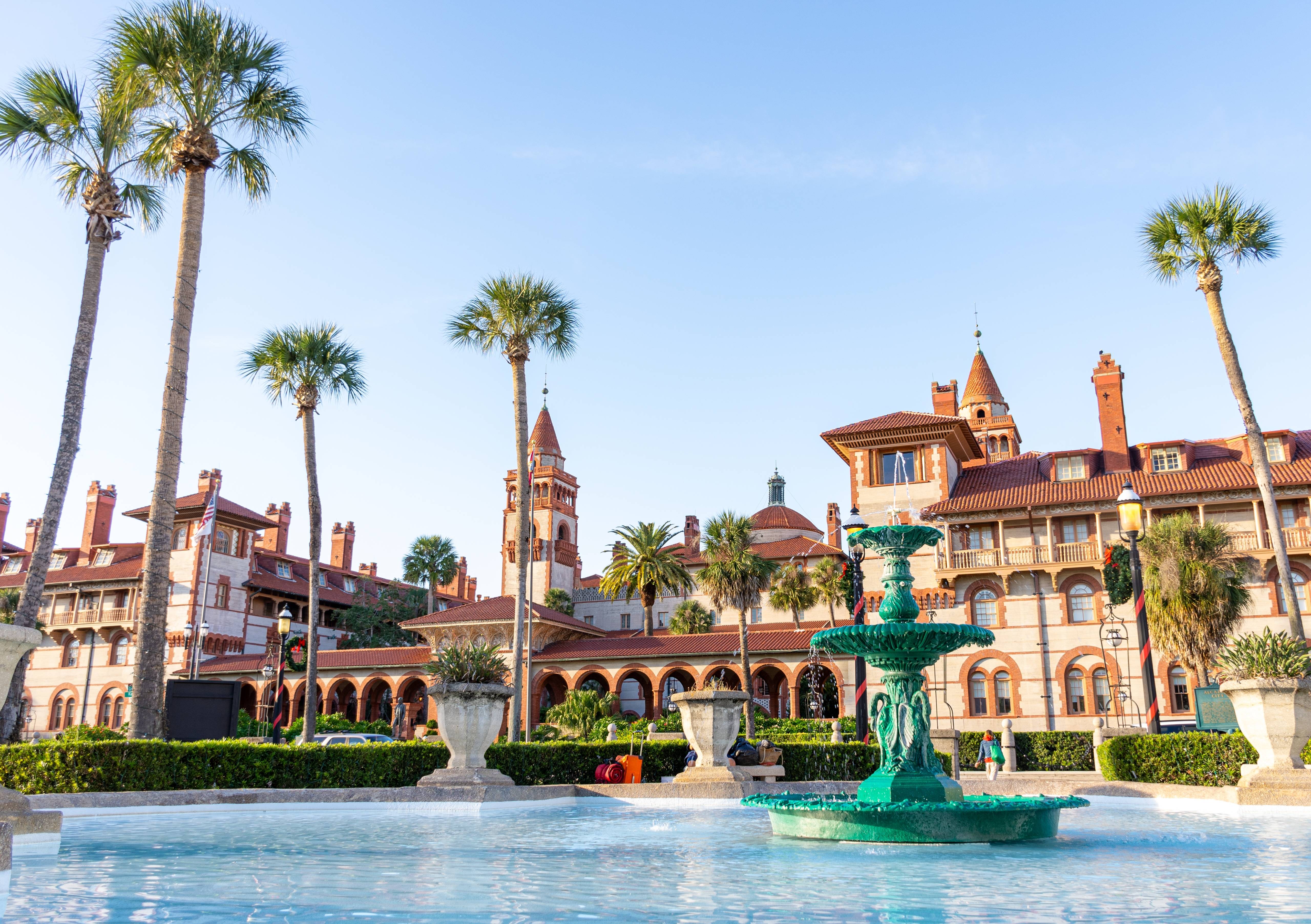
Founded in 1565, St. Augustine is the oldest city in the U.S. – and it still feels like a Spanish colony. Walking through its narrow streets feels like stepping directly into Andalusia, complete with fortress walls and Mediterranean breezes.
As the oldest continuously occupied European settlement in the U.S., St. Augustine boasts centuries-old architecture, much of which reflects its Spanish origins. The town was founded in 1565 by the Spanish, and visitors can still see remnants of this influence in its red-tile roofs, wrought-iron balconies, and cobblestone streets.
The Castillo de San Marcos, a star-shaped fortress built by the Spanish in the late 17th century, stands as one of the most prominent historical landmarks. Other notable sites include the gates of St. Augustine and the winding, pedestrian-friendly streets of St. George Street. Walking through the city feels like stepping into a 17th-century Spanish town, offering an immersive cultural experience without leaving the U.S.
The town’s narrow streets are lined with boutiques, art galleries, and cafes serving Spanish-influenced cuisine. Seasonal events like the Nights of Lights festival fill the city with twinkling illuminations reminiscent of European holiday markets.
Helen, Georgia: Bavaria in the Blue Ridge
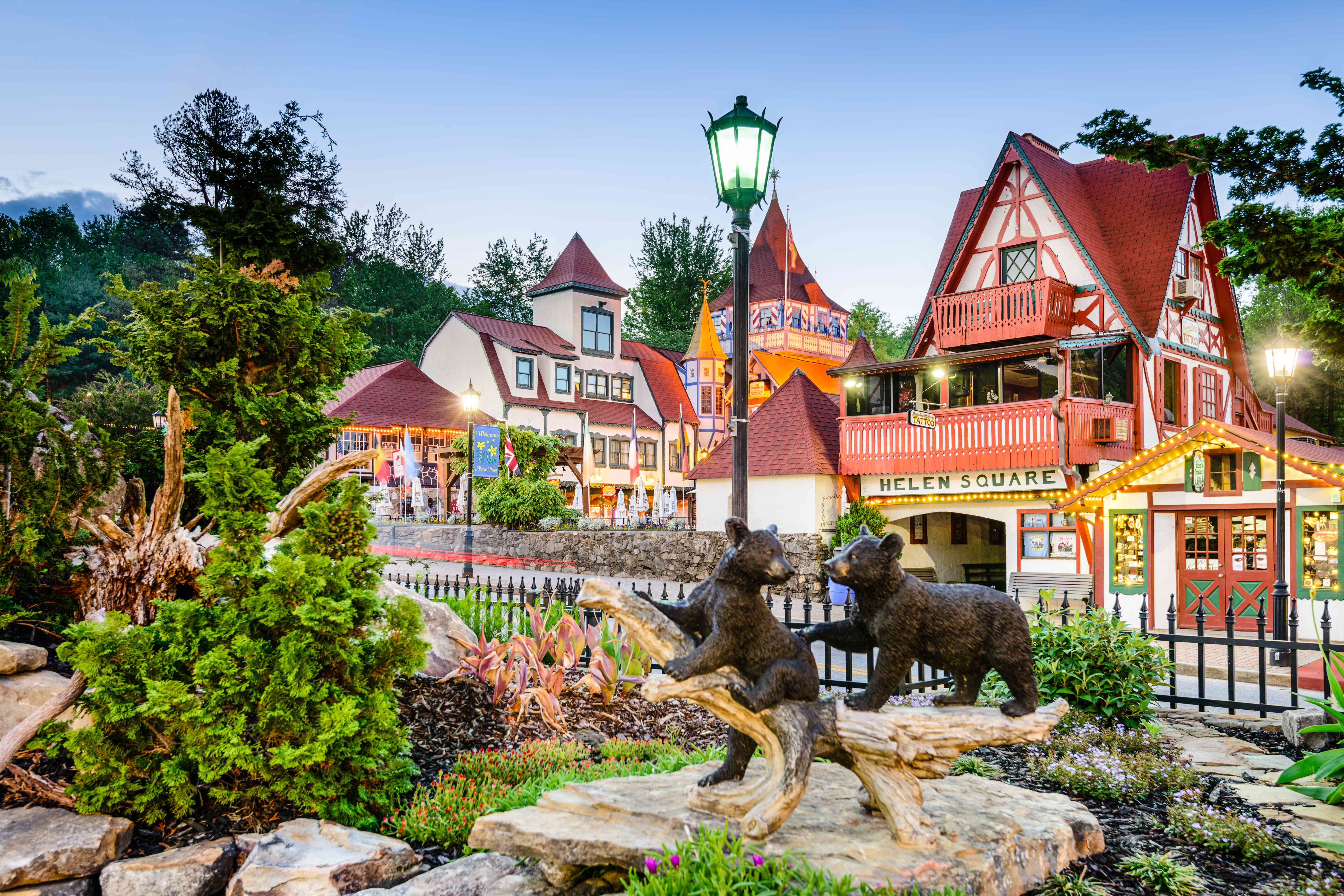
You might be surprised to find Bavaria in the Georgia mountains – but that’s Helen. Once a struggling logging town, Helen transformed itself in the 1960s into a themed Alpine village, complete with chalet-style buildings and cobbled lanes. This mountain town proves that sometimes the most unlikely places hide the greatest surprises.
Helen’s backstory is a little bit different from the rest of the European-inspired towns on this list. While places like Solvang and Tarpon Springs were originally settled by European immigrants, Helen’s German aesthetic was established in the late 1960s when the town was completely overhauled to mimic a German alpine village as a way to draw tourists to town. Today, the Bavarian-style buildings, authentic German food (don’t miss the apfelküchle, or apple fritters, from Hofer’s Bakery and Cafe), and Oktoberfest celebrations are still drawing in millions of tourists every year.
When you’re not thrilling the kids with tubing in the Chattahoochee River, you can wow them with the town’s many festivals. These go beyond the traditional beer-and-brat affairs of Oktoberfest, too. If you don’t believe us, just visit during the hot-air balloon festival in June.
Frankenmuth, Michigan: Little Bavaria with Big Charm

Welcome to Michigan’s answer to Germany. Frankenmuth proudly calls itself “Michigan’s Little Bavaria” and lives up to the name with its half-timbered houses, glockenspiel tower, and traditional beer halls. This town doesn’t just embrace its German heritage – it celebrates it year-round.
Frankenmuth is a small town in Michigan, located just 90 miles north of Detroit. The interesting thing about Frankenmuth is the fact that it’s the most German town in the USA. The moment you enter, you feel like you’re in Bavaria. Bavarian-style architecture, Maypoles, and pale-blue-and-white Bavarian flags adorning the houses greet you at every step. The town has strong German roots thanks to generations of Franconian Lutherans immigrating to the area between the mid-1800s and the WW II.
And if you love the idea of Bavaria at Christmastime, you’re in luck! Frankenmuth is home to Bronner’s, the world’s largest Christmas store, and it feels like it’s the holidays all year long there. The town transforms into a winter wonderland that rivals any German Christmas market.
Natchitoches, Louisiana: France’s Southern Belle
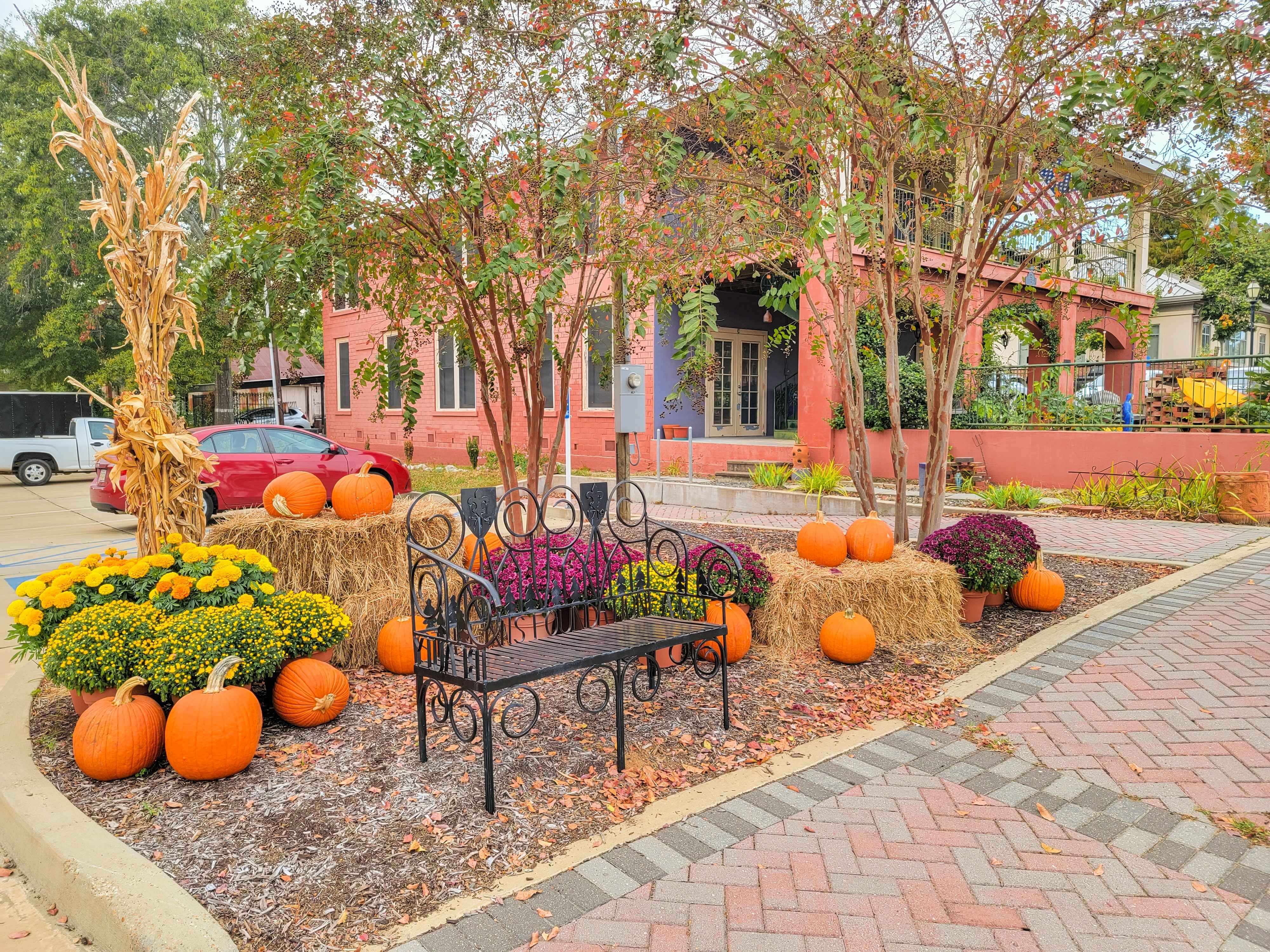
Deep in Louisiana’s pine forests lies America’s oldest permanent settlement in the Louisiana Purchase territory. Founded by French explorer Louis Juchereau de St. Denis in 1714, Natchitoches became the oldest permanent European settlement of the Louisiana Purchase territory. Although Mardi Gras is one of the best times of the year to visit, the town’s French leanings are apparent year-round, from the 33-block Historic Landmark District, which is home to the Basilica of the Immaculate Conception, the area’s first parish church.
Natchitoches is one of the best places to experience European, especially French, allure without leaving the United States. This town was founded by a French explorer, Louis Juchereau de St. Denis, in 1714, and his presence and heritage are still obviously evident.
The town’s historic district showcases French Creole architecture with ornate ironwork and centuries-old buildings. Just downriver sits the Fort St. Jean Baptiste State Historic Site (open Wednesday through Sunday), a replica of the original settlement, which offers guided tours focused on how the fort once served as a major trading post.
New Glarus, Wisconsin: Switzerland in the Heartland
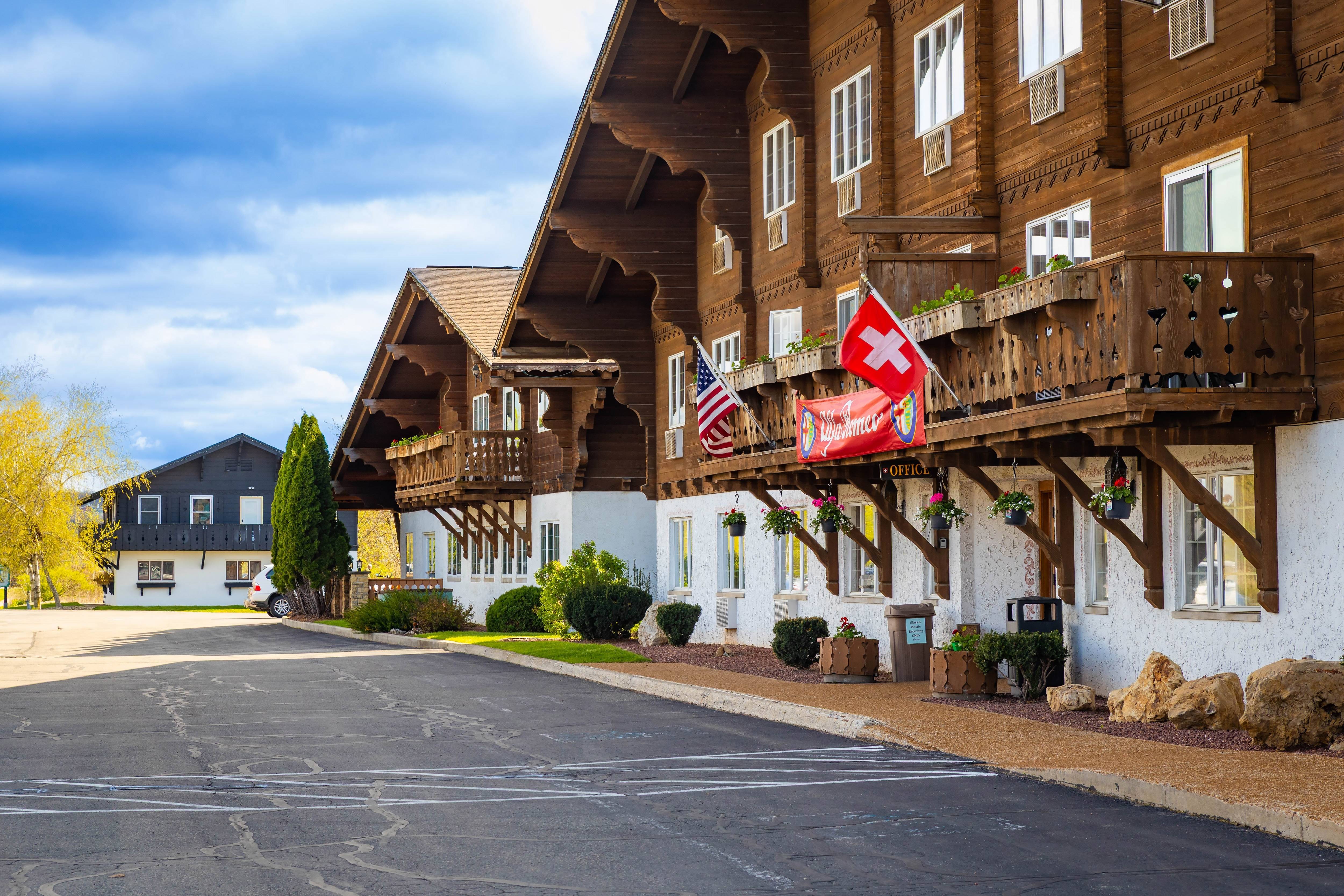
New Glarus, Wisconsin, offers an authentic Swiss experience in the heart of the Midwest. The town, settled by Swiss immigrants in 1845, is often referred to as “America’s Little Switzerland.” The town’s Swiss influence is evident in everything from its architecture to its festivals. Visitors can stroll through streets lined with Swiss chalet-style homes, and explore the Swiss Historical Village & Museum, which features replica 19th-century buildings, including a cheese factory and a settler’s cabin.
Named after the Glarus canton of Switzerland, New Glarus lets you travel to the charming Swiss countryside without spending hours and hours on flights. New Glarus boasts traditional Swiss chalet-style designs, complete with steeply pitched roofs. The decorative woodwork and flower boxes on balconies are typical of the Alpine villages that line the Swiss countryside.
New Glarus is also known for its Swiss-German language and traditions, such as yodeling and alphorn playing, which are an integral part of the town’s heritage. The town has capitalized on its Swiss identity, with businesses offering Swiss cuisine and a wide variety of cheeses, including the famous Limburger cheese.
Fredericksburg, Texas: German Heart of Hill Country
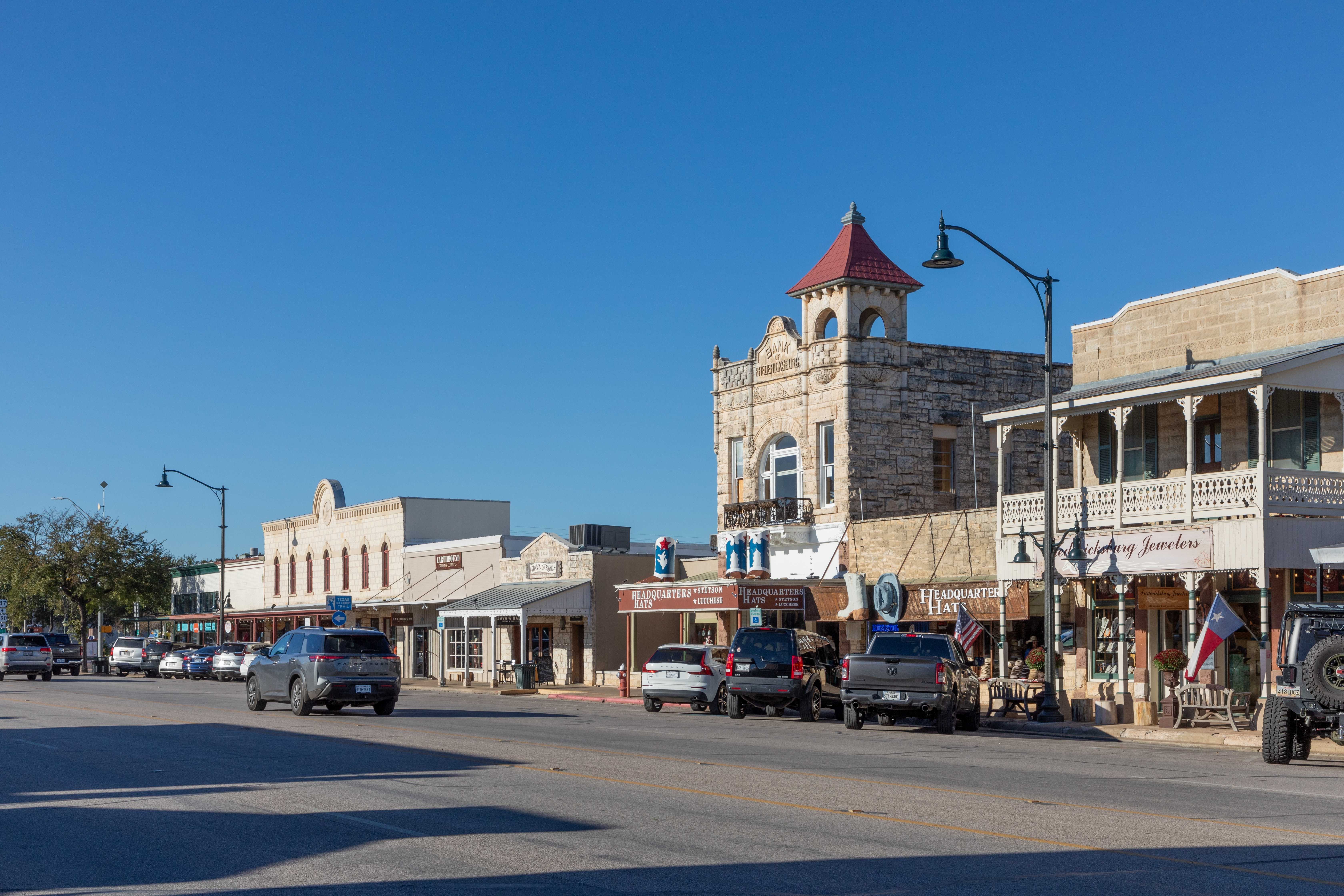
It may surprise you that one of our favorite Bavarian villages is located in Texas, despite the state’s own unique sense of culture. Nestled in the Texas Hill Country, Fredericksburg places its German heritage front and center. This town proves that German culture found fertile ground in the most unexpected places.
Named for Prussia’s Prince Ferdinand but known to locals as Fritztown, this Texas hill country village was founded by German settlers in 1846. At first, new residents were won by the offer of free land, though settlers’ industrious nature quickly propelled Fredericksburg into a regional hub, albeit one that spoke its own dialect, Texas German because man Indeed, this town has its own Germanic dialect, fittingly called Texas German. A skunk, for instance, is a “stinkkatze,” a blend of English and German.
Originally known for the unique German dialect spoken by its early residents, Fredericksburg is now a popular vacation destination in the Texas Hill Country. The colorful town features storybook architecture, including a replica of a 19th-century German church, and an awesome local wine scene – the region is home to over 100 wineries and vineyards.
Poulsbo, Washington: Little Norway on the Fjord
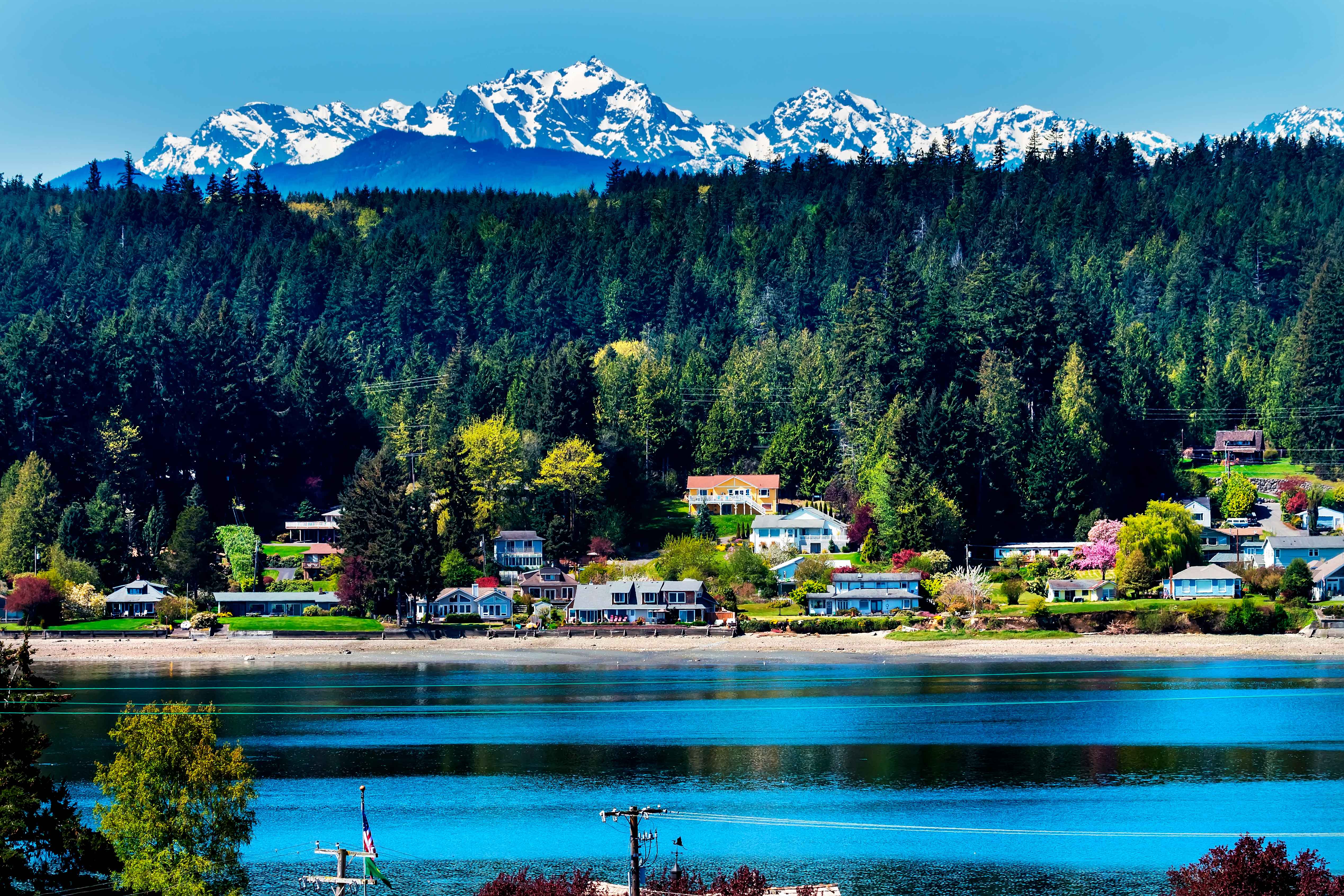
Situated on the Kitsap Peninsula on Puget Sound, Poulsbo (population: approximately 12,000) has come to be known as “Little Norway on the Fjord.” Today, Poulsbo remains rich with Norwegian culture, as evidenced by its Scandinavian-style architecture, numerous beer halls and pubs, and an annual calendar of events, which includes a Viking Festival in May and Midsommer Festival in June, both geared toward celebrating the town’s heritage through food, music, and art.
This waterfront community captures the spirit of Norwegian coastal villages with its Nordic architecture and maritime atmosphere. Poulsbo was founded in the 1880s by a Norwegian immigrant, Jørgen Eliason. Ever since, it’s been known as “Little Norway on the Fjord.”
The town’s Scandinavian heritage shines through in its festivals, from the lively Viking celebration to traditional Midsummer festivities. Walking through downtown Poulsbo feels like discovering a hidden Norwegian fishing village, complete with bakeries serving lefse and shops selling Nordic crafts.
Conclusion

These hidden gems prove that you don’t need an international flight to experience the magic of Europe. From California’s Danish countryside to Michigan’s Bavarian Christmas markets, America’s “Little Europe” towns offer authentic cultural experiences that rival their Old World counterparts. Each destination tells a unique story of immigrants who carried their traditions across an ocean, creating communities that preserve the best of both worlds.
Whether you’re craving German bratwurst in the Georgia mountains or Danish pastries in California wine country, these towns deliver experiences that feel genuinely European while remaining distinctly American.
What do you think about these hidden European treasures? Tell us in the comments which one you’d visit first.
